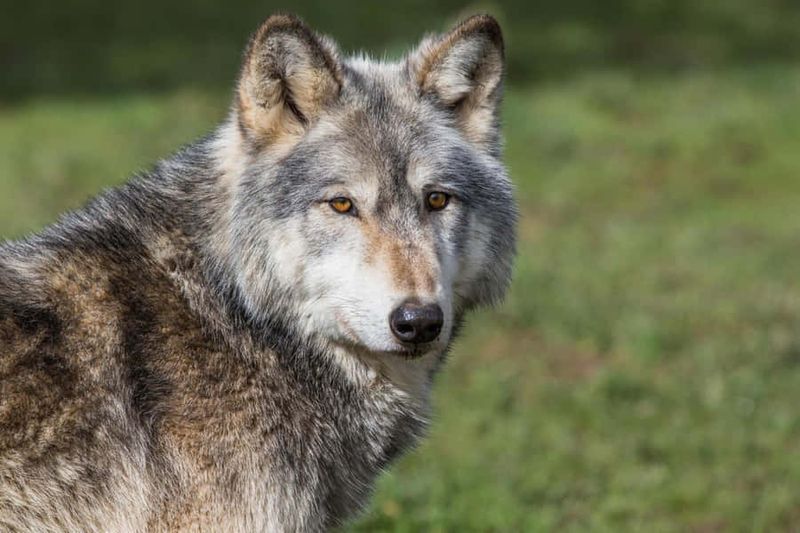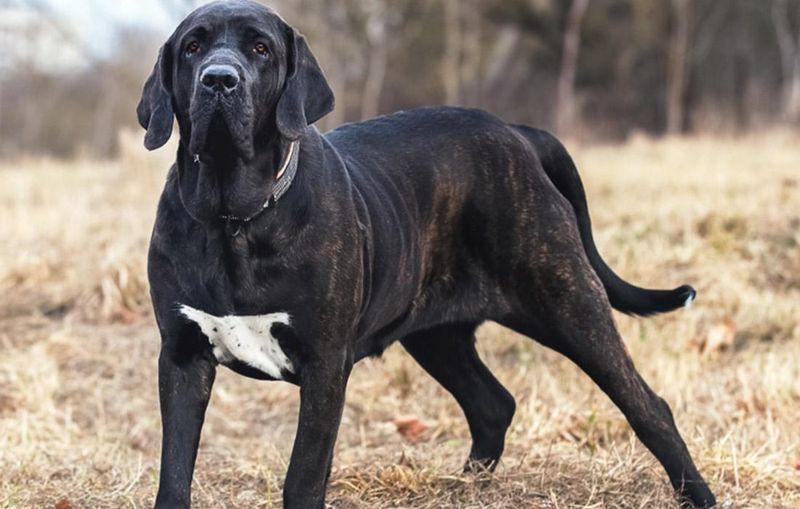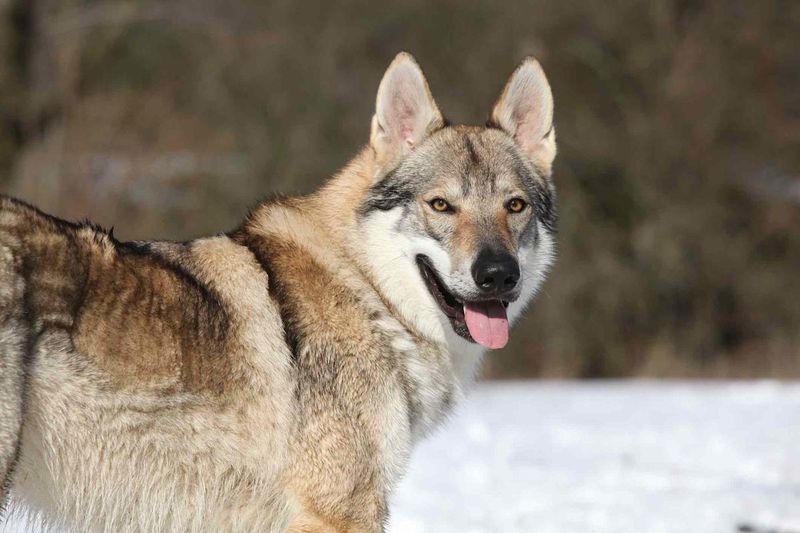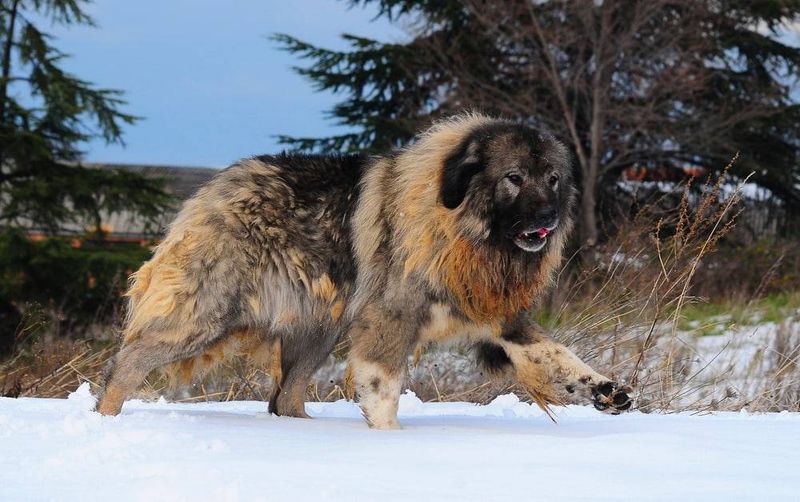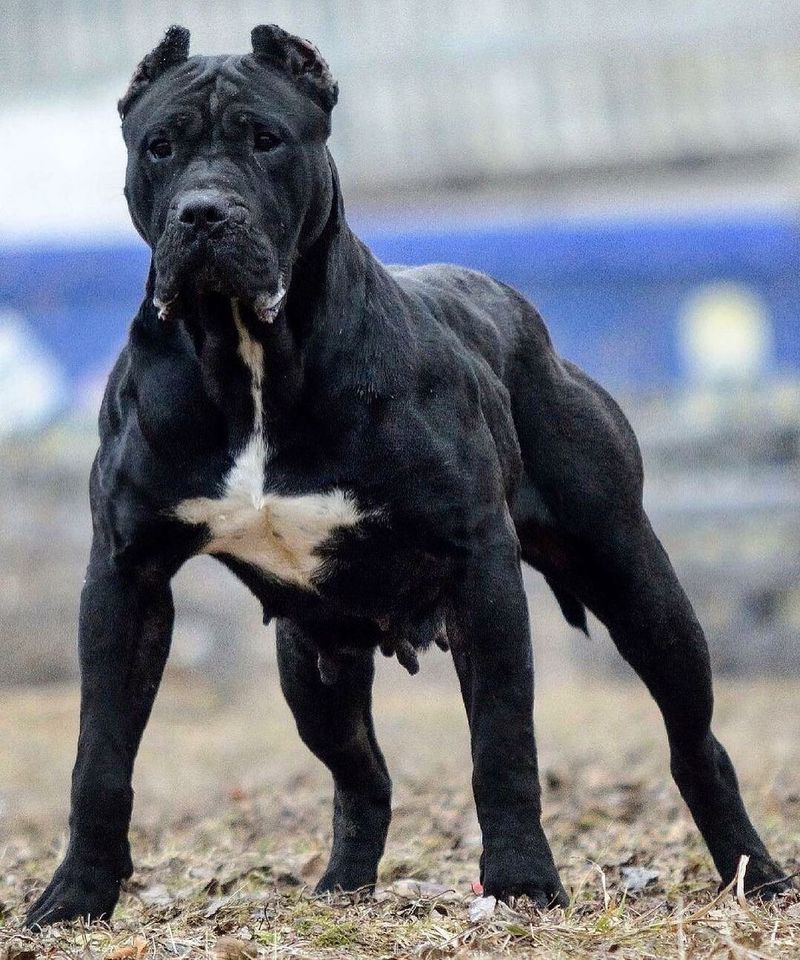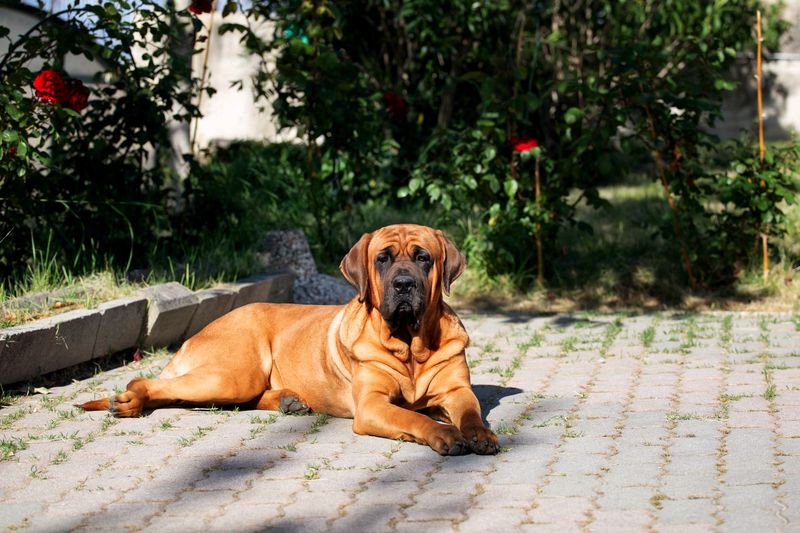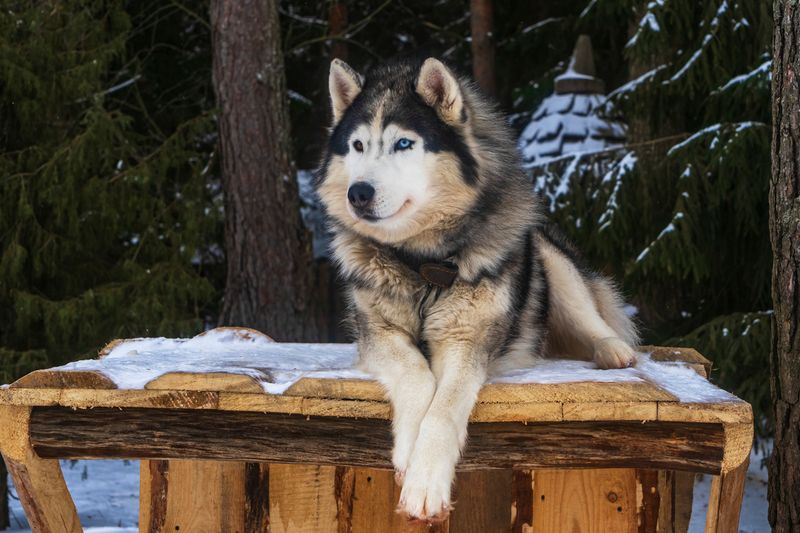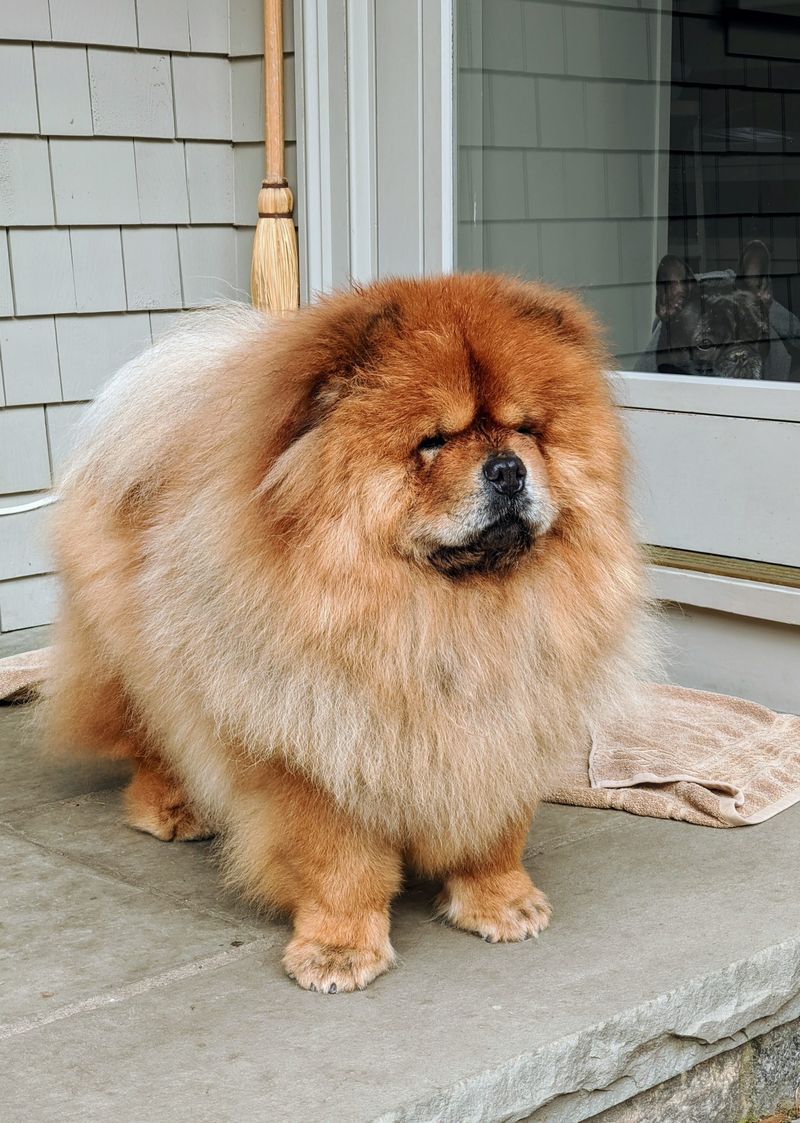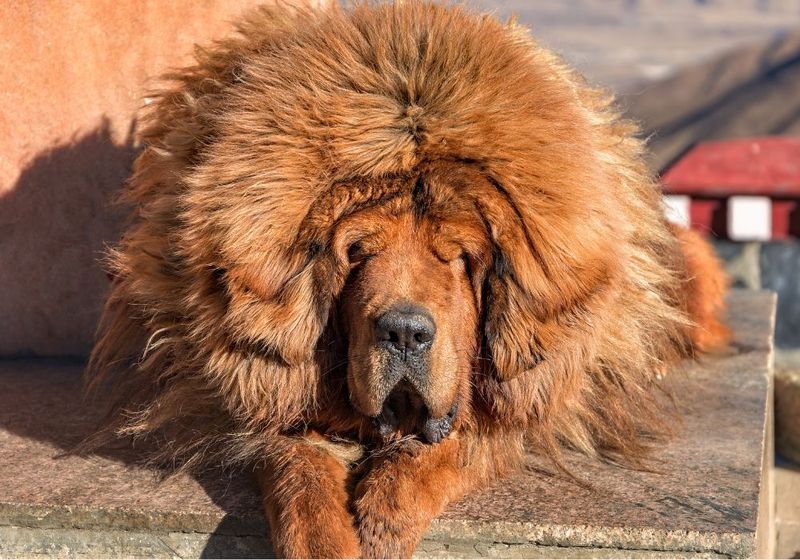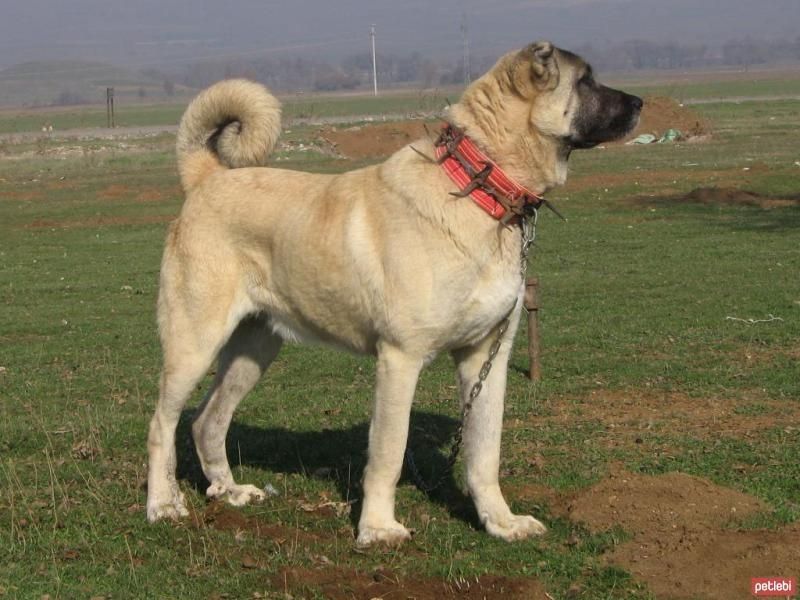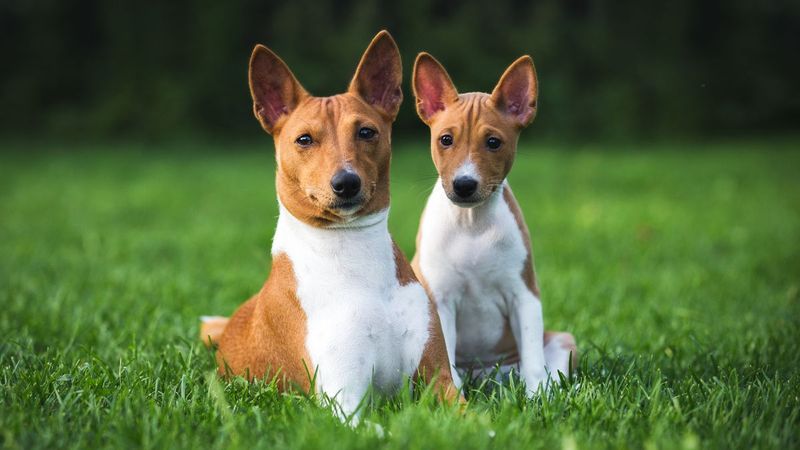While dogs are commonly known as man’s best friend, not every breed makes the ideal pet. Some dogs, due to their size, temperament, or specific needs, are better left to professionals or kept in their natural habitats. Here, we explore 12 dog breeds that are not suitable to be kept as pets, despite their fascinating characteristics and traits.
Wolfdog
The Wolfdog, with its piercing gaze and wild appearance, is a striking creature. A Wolfdog is a hybrid of domestic dogs and wolves, making it unpredictable and challenging to train.
Their instincts are strong, often leading them to behave more like their wild ancestors than a household pet. Their need for vast space and specialized care makes them unsuitable for typical homes.
Though they may seem enchanting, their complex nature demands a handler with experience in managing wild animals. Their care requires knowledge beyond the average pet owner, ensuring safety for both the dog and its surroundings.
Fila Brasileiro
The Fila Brasileiro is a breed known for its incredible loyalty and strength. This dog’s natural instinct to protect makes it both a formidable guardian and a potential risk for families.
Known for their aggression towards strangers, they require a firm hand and consistent training. Their size and power are not suitable for novice owners.
With a heart dedicated to their family, they are relentless in their protection, but their territorial nature can lead to challenges in urban settings. Owners must be committed to managing their behavior responsibly.
Czechoslovakian Vlcak
The Czechoslovakian Vlcak is a sight to behold, with its striking resemblance to wolves. Originally bred for military work, they possess high energy and intelligence.
These dogs are independent thinkers, often making them challenging for inexperienced handlers. Their need for constant mental and physical stimulation can overwhelm a casual pet owner.
While they form strong bonds with their human companions, their loyalty is often reserved for those who can match their energetic lifestyle. An ideal environment involves extensive space and an active routine to satisfy their adventurous spirit.
Caucasian Shepherd Dog
The Caucasian Shepherd Dog is known for its immense size and courage. Often used to guard livestock, this breed is fiercely protective and can be aggressive if not properly trained.
Its sheer size and strength make it unsuitable for small living spaces or inexperienced owners. Their dominant nature demands a handler who can establish clear leadership.
While they are loyal and loving to their family, their protective instincts can lead to territorial behavior. Ideal for rural settings, they thrive where they have a purpose and space to roam freely.
Presa Canario
The Presa Canario is a breed that commands respect with its muscular build and intense gaze. Known for their strength and protective instinct, they require an experienced owner to handle their dominant personality.
Without proper training, they can become aggressive, making them unsuitable for households with children or other pets. They thrive in environments where they have clear guidance and purpose.
Despite their intimidating appearance, they can be affectionate with their family. However, their need for control and leadership should not be underestimated. Responsible ownership is key to managing this powerful breed.
Dogo Argentino
The Dogo Argentino is a dynamic and imposing breed, originally bred for big-game hunting. Their athleticism and strength are matched by a confident demeanor.
These dogs are not for the faint-hearted, requiring firm training and socialization to prevent aggressive tendencies. They are protective and can be territorial, posing challenges in family environments.
While they can be affectionate, their strong prey drive and need for dominance make them better suited for experienced handlers. They excel in active homes where they have plenty of space and stimulation to keep their minds and bodies engaged.
Tosa Inu
The Tosa Inu, a breed with roots in Japan, carries an air of elegance and strength. Originally bred for fighting, their history dictates a need for careful handling.
These dogs require owners who can provide firm boundaries and consistent training. Their size and strength can be daunting, and their temperament may not suit all households.
They are generally calm but can become aggressive if not properly managed. Their environment should allow them room to move freely, and their owner must be committed to ongoing training to ensure a harmonious relationship with this formidable breed.
Alaskan Malamute
The Alaskan Malamute is a majestic creature, built for endurance and strength. Bred for pulling heavy sleds, their energy levels are not easily matched.
They are independent by nature, which can result in stubbornness if not properly trained. Their need for physical exertion often exceeds what a typical owner can provide.
While they can be friendly and social, their size and energy make them a challenging pet for those unprepared for such demands. They thrive in environments where they can engage in physical activities, ideally in cooler climates.
Chow Chow
The Chow Chow, with its distinctive mane and blue-black tongue, is a breed of ancient dignity. Often perceived as aloof, they require a calm and patient owner to earn their trust.
Their independent nature can lead to wilfulness, making early socialization and training crucial. They are not typically aggressive but can be territorial, especially with other animals.
Despite their lion-like appearance, their temperament can be more cat-like, preferring solitude at times. They do best in homes where they are respected for their unique personality and given space to be themselves.
Tibetan Mastiff
The Tibetan Mastiff, known for its size and thick fur, is a guardian of ancient lineage. Their protective instincts are unparalleled, often making them territorial and wary of strangers.
Their independent streak requires an owner who can establish authority without force. Their loyalty is reserved for those who can meet their need for space and purpose.
Though they can be loving with family, their size and temperament are not suited for city living. An ideal setting is one where they can roam and fulfill their natural instincts to protect and guard.
Kangal
The Kangal, with its noble stance and impressive size, is a breed known for protecting livestock. They are vigilant and courageous, often taking their duties very seriously.
Their protective nature means they can be aggressive towards perceived threats, requiring an owner who can manage their instincts responsibly. They are more suited to rural environments where they have a job to do.
Though gentle with their charges, they are not the typical family pet. Their need for space and freedom makes them ideal for experienced handlers who can provide a structured environment.
Basenji
The Basenji, often referred to as the “barkless dog,” is known for its unique vocalizations and cat-like demeanor. Originating from Africa, their hunting instincts are strong and require channeling.
Their independent nature can lead to challenges in training, and they do best with owners who understand their quirks. They are not entirely silent, making a unique yodel-like sound instead.
While small in size, their personality is large, often leading them to be escape artists if not properly secured. A home that appreciates their distinctive traits and provides mental stimulation is ideal.

